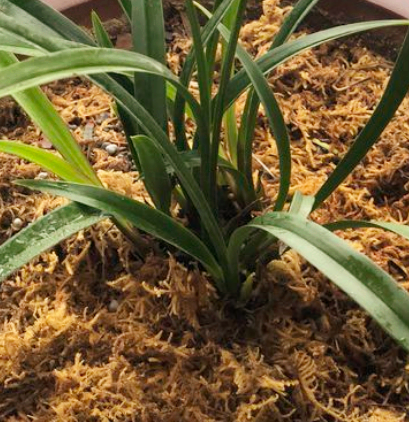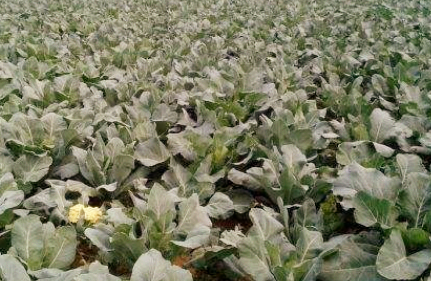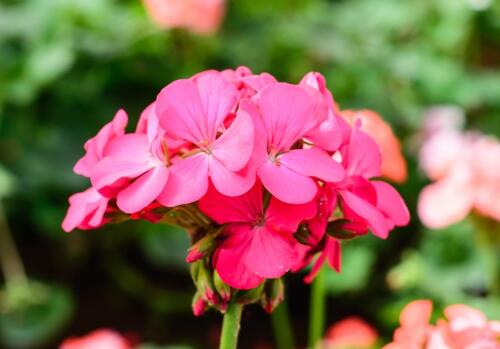How to raise orchids of "gentleman in flowers"? How much is the price per pot?
Orchids, also known as Chunlan and Guoxiang, are known as "gentlemen in flowers". They are epiphytic or terrestrial herbs of the genus Orchidaceae, with high ornamental value and cultivation value. Orchids have been cultivated in China for more than 2000 years, so how to raise orchids? How much is the price per pot?
First, how to raise orchids?
1. Soil: the soil for orchid should be mainly humus, mainly humus soil or mountain humus soil. In the south, the humus soil of origin, commonly known as orchid mud, can also be artificially prepared into loose, aerated and permeable culture soil with saprophyllite, vermiculite and perlite. Generally, 8 parts of rotten leaf soil and 2 parts of river sand were mixed into culture soil, or 7 parts of rotten leaf soil, 2 parts of perlite, 1 part of river sand mixed culture soil, or 6 parts of rotten leaf soil (peat soil), 3 parts of compost soil and 1 part of river sand mixed culture soil.
2. Fertilization: orchid topdressing mostly uses liquid fertilizer or foliar fertilizer, and its concentration should be lighter than that of other flowers. Generally, in the growing season, about 15% of fully mature thin cake fertilizer water can be applied, or 0.1% urea fertilizer water plus 0.2% potassium dihydrogen phosphate fertilizer water, once every 15 days. 0.2% potassium dihydrogen phosphate or plant ash water can be sprayed to the leaf surface 2 times before flowering to the flowering stage to promote the development of roots, stems and flowers. Orchids are fleshy roots, do not apply unripe fertilizer, so as not to rot the roots.
3. Watering: watering orchids should be determined according to species, growth conditions and local climate, should be moist but not wet, dry but not dry, watering should not be too much or too little, and master the principle of not drying in autumn and not wet in winter. When the temperature is low in winter, the plant is in a dormant state, and watering should be controlled. Generally, it can be watered every 5-7 days, but the flowering magnolia in winter needs more water. It should be watered every 2-3 days in spring and autumn, and once or twice a day in summer.
4. Temperature: northern potted orchids should be moved indoors when the temperature drops to 5 ℃ before and after the Frost Festival, and windows should be opened frequently at the initial stage of entering the house to maintain ventilation. It is suitable to keep the room temperature about 10 ℃ in winter. Grain Rain later moved to the outside for maintenance. The suitable temperature for orchid growth is 16: 24 ℃. The indoor temperature is generally low in winter, 10: 12 ℃ in daytime and 5: 10 ℃ at night. The temperature and humidity should not be too high, and the temperature in summer should not exceed 30 ℃.

5. Lighting: orchids like shade and are afraid of direct light, so they should be shaded in spring, summer and autumn. For family orchids, in order to control the amount of light, it is best to put them on the balcony windowsill or under the eaves with bamboo shade, generally shading from 9 am to 6 pm, and opening the curtain after 6 pm in the morning and after 6 pm to make it accept scattered sunlight. In winter, it should be moved to the place where the scattered light is visible indoors, but direct sunlight should also be avoided. The shade tolerance of orchids was the strongest, followed by Jian Lan, while Chunlan and Cymbidium were weaker.
6. Pruning: plant pruning should be carried out in the process of orchid culture, such as when the old leaves are withered and yellow, which is beneficial to the growth of other leaves and can be ventilated. On the other hand, the leaves with diseases need to be pruned in time to prevent infection. In addition, scissors also need to be disinfected to prevent infection.
7. Change the pot: the orchid grows slowly, and the pot can be changed every 1 ~ 2 years after the flower fades. When putting on the basin, fill in tile grains, slag and so on about 3 cm at the bottom of the basin to facilitate drainage. Then, put into a layer of culture soil, and then put the orchid seedling into the middle of the basin, straighten the root straight and let it stretch naturally. Gently lift the orchid seedling in the middle of the filling, shake the flowerpot at the same time, so that the soil is closely combined with the root, when filling the soil 2cm away from the mouth of the basin, gently press it with your hand.
How much is the price of orchids per pot?
The price of orchids is not certain, because the prices of different varieties of orchids are also very different. Ordinary orchids are very cheap, and you can buy a lot of them for a few yuan. In fact, orchids are sold in bags, while high-quality orchids are sold in terms of seedlings. Some can even sell for tens of thousands of yuan a seedling. The "plain crown lotus tripod" produced in Yunnan should be the most expensive orchid on the market at present. The "plain crown lotus tripod", composed of four continuous-petal orchid seedlings, is extremely rare on the market and is a "rare treasure" among orchid species, with an estimated value of 15 million yuan.
Third, how to set the price of orchids?
1. Pricing by petals: the petal shape of orchids is an important yardstick for judging the grade of orchids. For example, plum petals, lotus petals and daffodils have always been recognized as petal flowers. The price of these orchids is several times higher than that of ordinary bamboo leaf orchids, even dozens of times.
2. Pricing with incense: orchids have such laudatory names as "Xiangzu", "the fragrance of the king" and "the first fragrance in the world", so the aroma is also an important basis for judging the grade of orchids. The price of flowers with the same petal shape is high, if they can achieve the integration of fragrance and type.
4. Pricing by color: orchids are pure white, peach red, bright red, purple red, white green, emerald green, dark green, golden yellow, milky yellow, purple black and so on. Generally speaking, the price of gorgeous red is the highest, and the rest are yellow, white, purple and so on.
5. Pricing by strange: the more strange the flowers and leaves of orchids are, the higher the grade is, especially those orchids which are strange and beautiful, attractive and lovely, have obvious aesthetic characteristics, achieve higher appreciation value, and can create rich wealth when trading.
6. pricing by quantity: with a large number of orchid varieties and a wide range of cultivation, what we all have is bound to affect the price of the transaction. A rare variety, with a small quantity, is in a state that supply exceeds demand, and the price is naturally higher.
7. Pricing by type: orchids pay attention to the unity of charm, leaf posture, flower posture and color, and the overall coordination. A variety with good shape, fragrance, color and rhyme must be deeply loved by the majority of orchid friends.
8. pricing by species: there are many varieties of orchids, and the prices of the same petals vary from variety to breed. For example, lotus and bean orchids may usually trade for only a few thousand yuan, and the prices of spring sword and lotus orchids are several times higher than those of bean orchids.
Time: 2019-03-13 Click:
- Prev

How to grow cauliflower (cauliflower)? How is the planting benefit?
Cauliflower, also known as cauliflower or cauliflower, has a variety of practices, delicious taste, is a more popular vegetable, high nutritional value, but also a good medicinal effect, loved by many people and growers, so how to grow cauliflower (cauliflower)? What is the planting benefit? How to grow cauliflower?
- Next

What should the newly bought geranium leaves turn yellow, whitish and withered?
Nowadays, in addition to leisure and entertainment to pass the boring time, many people choose to cultivate their sentiment by planting flowers and grass, cooking wine and tea, but growing flowers is also a deep knowledge. Let's talk about what to do if the newly bought geranium leaves turn yellow and dry. The question of how long it will take to water it! Introduction to geraniums
Related
- Fuxing push coffee new agricultural production and marketing class: lack of small-scale processing plants
- Jujube rice field leisure farm deep ploughing Yilan for five years to create a space for organic food and play
- Nongyu Farm-A trial of organic papaya for brave women with advanced technology
- Four points for attention in the prevention and control of diseases and insect pests of edible fungi
- How to add nutrient solution to Edible Fungi
- Is there any good way to control edible fungus mites?
- Open Inoculation Technology of Edible Fungi
- Is there any clever way to use fertilizer for edible fungus in winter?
- What agents are used to kill the pathogens of edible fungi in the mushroom shed?
- Rapid drying of Edible Fungi

